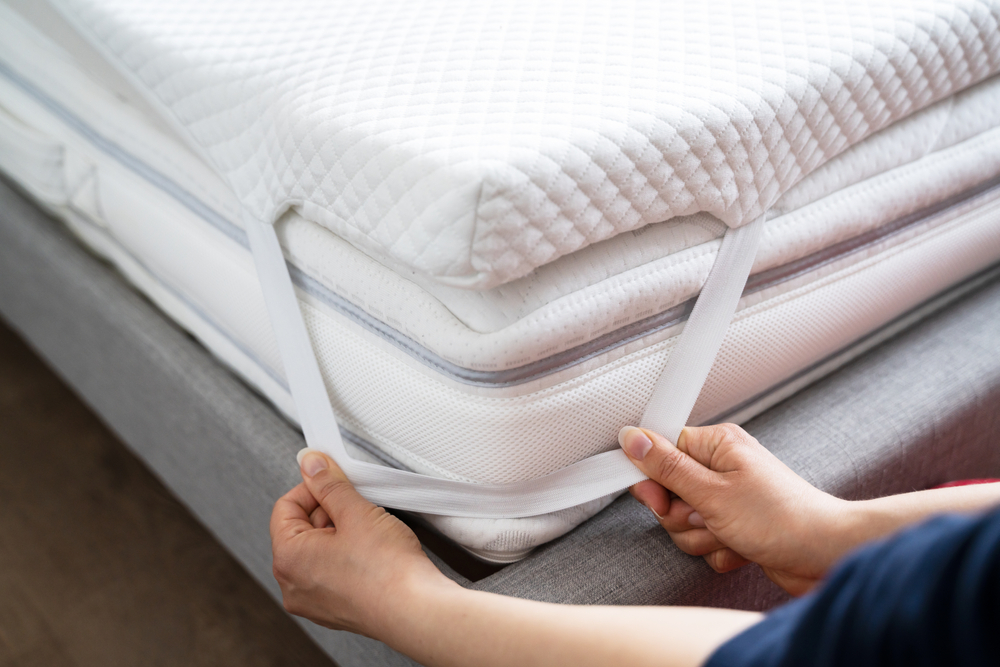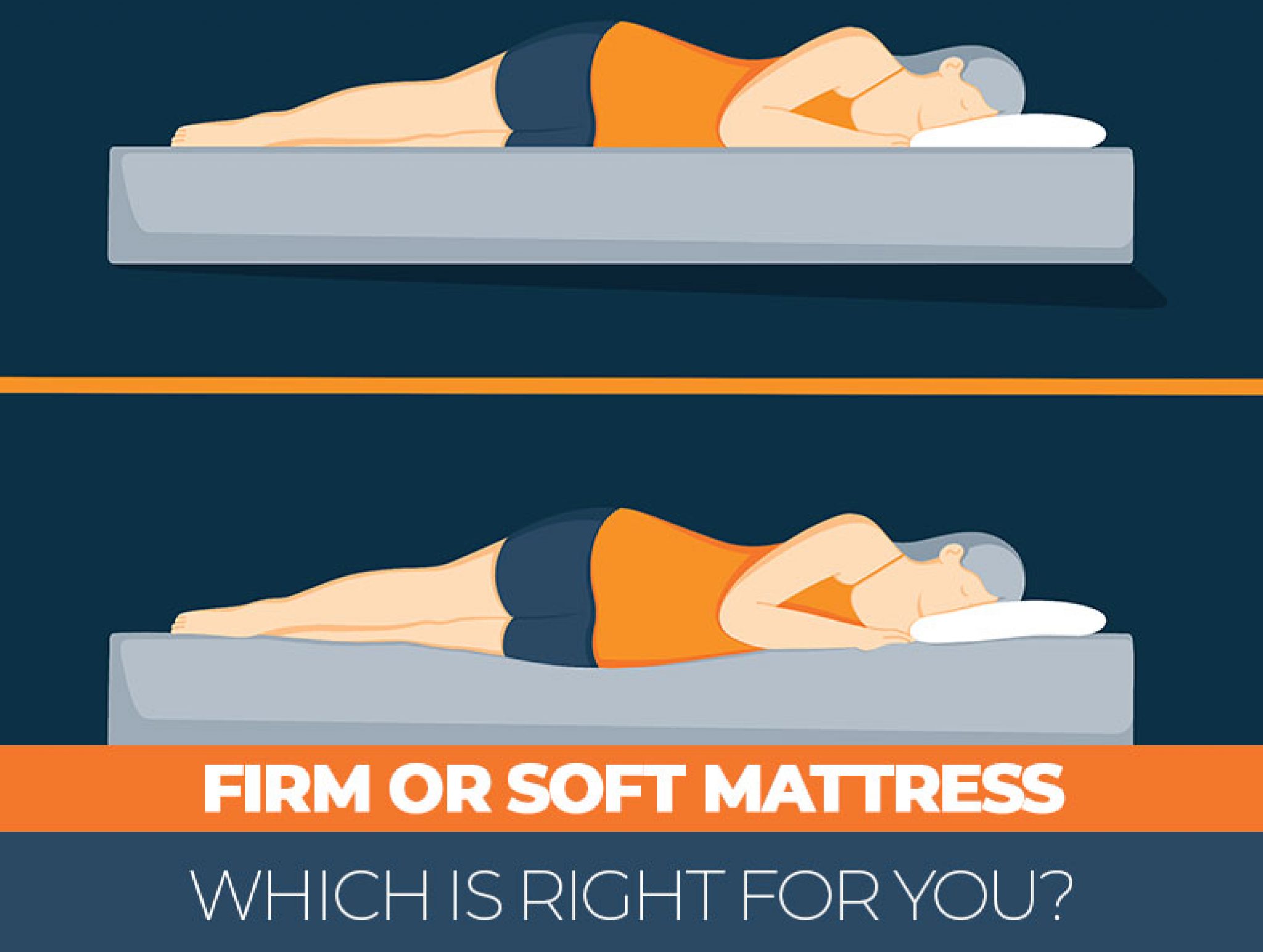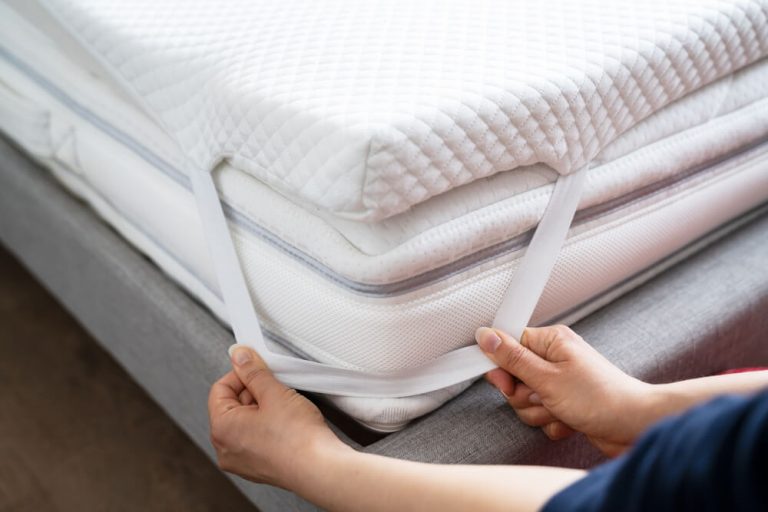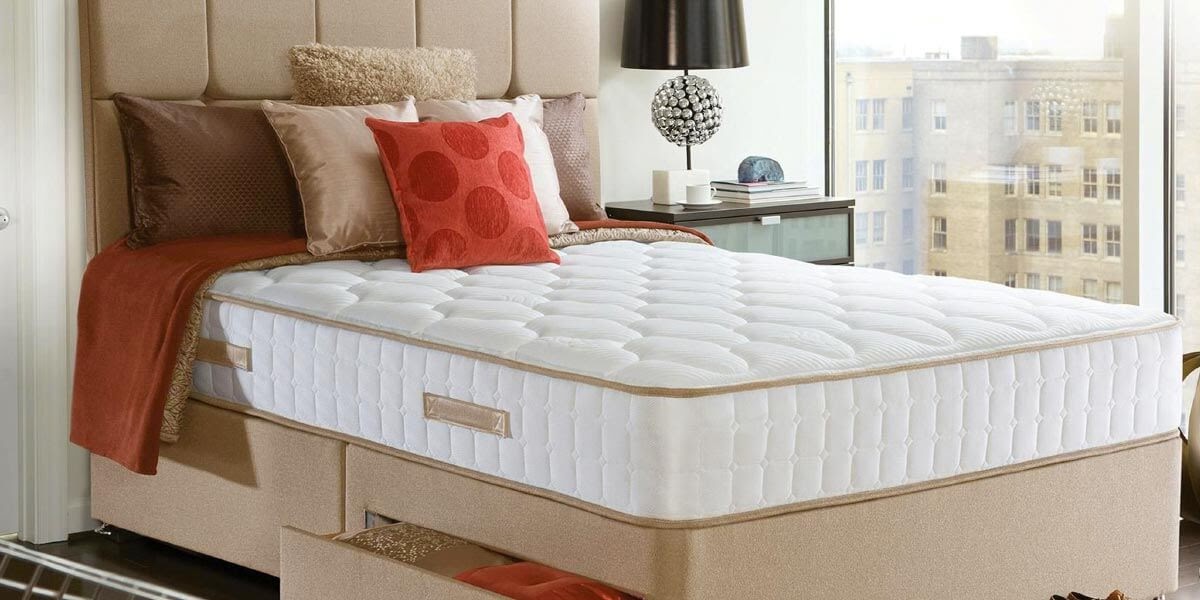Topper and mattress combinations offer a variety of benefits for those looking to improve their sleep experience. From added comfort and support to extending the life of your mattress, here are the top advantages of combining a topper with your mattress. First and foremost, adding a topper to your mattress can greatly enhance its overall comfort level. A topper is an extra layer of cushioning that sits on top of your mattress and provides additional support and softness. This can be especially beneficial for those who find their mattress to be too firm or uncomfortable. Additionally, a topper can help alleviate pressure points on your body, especially if you have a traditional innerspring mattress. By providing extra cushioning, a topper can help distribute your body weight more evenly and reduce discomfort in areas such as your shoulders, hips, and lower back. Memory foam toppers, in particular, are known for their ability to contour to the shape of your body and provide personalized support. This can be especially helpful for those with chronic pain or injuries.1. Benefits of Combining a Topper with a Mattress
When it comes to choosing the right topper for your mattress, there are a few key factors to consider. First, you'll want to determine the level of firmness and support you need. This will largely depend on your personal preferences and any existing mattress issues you may be trying to address. Next, think about the thickness of the topper. Toppers range from 1-4 inches in thickness, with thicker options providing more cushioning and support. Keep in mind that a thicker topper may also raise the height of your mattress, which could impact the overall aesthetic of your bed. Lastly, consider the material of the topper. Memory foam, latex, and gel-infused foam are popular options, each with their own unique benefits. For example, memory foam is known for its ability to contour to your body, while latex is known for its durability and responsiveness.2. How to Choose the Right Topper for Your Mattress
Many people confuse mattress toppers with mattress pads, but there are some key differences between the two. While a topper is an extra layer of cushioning that is placed on top of your mattress, a mattress pad is a thin layer of padding that goes on top of your mattress and under your sheets. Mattress pads are typically used to provide a light layer of protection and/or to add a bit of extra cushioning. They are not designed to significantly alter the feel or support of your mattress like a topper can. Therefore, if you're looking to improve the overall comfort and support of your mattress, a topper is the way to go.3. Topper vs. Mattress Pad: What's the Difference?
As mentioned earlier, there are various types of toppers available, each with their own unique benefits. However, some are better suited for certain types of mattresses than others. Here are our top recommendations for the best types of toppers to use with different types of mattresses: - Memory foam toppers are ideal for innerspring mattresses, as they can help alleviate pressure points and provide extra support.4. The Best Types of Toppers to Use with Your Mattress
- Latex toppers are a great option for latex or foam mattresses, as they can help add a bit of extra cushioning and support without altering the overall feel.
- Gel-infused foam toppers are a good choice for those who tend to sleep hot, as they can help regulate body temperature and keep you cool throughout the night.
- Feather or down toppers are a good option for those who prefer a soft, plush feel. They are also a good choice for those with mattresses that are too firm.
Once you've chosen the perfect topper for your mattress, it's important to make sure it stays in place. The last thing you want is for your topper to shift around while you sleep, causing discomfort and disrupting your sleep. Here are a few tips for properly securing your topper to your mattress: - Use a fitted mattress cover or protector to hold the topper in place5. How to Properly Secure a Topper to Your Mattress
- Invest in a topper with straps or a non-slip bottom
- Use sheet suspenders or elastic straps to secure the topper to your mattress
- Consider using a mattress encasement to hold both your mattress and topper in place.
One of the biggest benefits of using a topper with your mattress is that it can help extend its lifespan. By adding an extra layer of cushioning and support, your topper can help reduce the wear and tear on your mattress, potentially adding years to its lifespan. To get the most out of your topper, here are a few tips for extending the life of your mattress: - Rotate your mattress and topper regularly6. Tips for Extending the Life of Your Mattress with a Topper
- Use a mattress protector to protect against spills and stains
- Keep your mattress and topper clean and free of dust and debris
- Follow the manufacturer's guidelines for cleaning and care.
If you have an older mattress that is starting to show signs of wear and tear, adding a topper can help revitalize it and make it more comfortable. As mattresses age, they tend to lose their shape and support, which can lead to discomfort and disrupted sleep. By adding a topper, you can add an extra layer of cushioning and support, making your old mattress feel like new again. This can be a more cost-effective option than replacing your mattress entirely, especially if it is still in relatively good condition.7. The Benefits of Using a Topper on an Older Mattress
When it comes to toppers and mattresses, thickness matters. As mentioned earlier, toppers typically range from 1-4 inches in thickness, with thicker options providing more cushioning and support. But how do you know which thickness is right for you? The best way to determine the right thickness for your topper and mattress is to consider your body weight and sleeping position. Thicker toppers are typically better for heavier individuals and side sleepers, as they tend to provide more support and cushioning. Thinner toppers may be suitable for lighter individuals and back or stomach sleepers who prefer a firmer sleep surface.8. How to Choose the Right Thickness for Your Topper and Mattress
As mentioned earlier, different types of toppers are better suited for different types of mattresses. Here is a breakdown of the best materials for toppers to use with different types of mattresses: - Memory foam toppers are best for innerspring mattresses9. The Best Materials for Toppers to Use with Different Types of Mattresses
- Latex toppers are suitable for latex or foam mattresses
- Gel-infused foam toppers are ideal for those who sleep hot
- Feather or down toppers are a good choice for those with firm mattresses.
In conclusion, combining a topper with a mattress can greatly enhance your sleep experience. By providing extra cushioning, support, and comfort, a topper can help alleviate pressure points, extend the life of your mattress, and improve the overall quality of your sleep. When choosing a topper, be sure to consider factors such as firmness, thickness, and material to find the best option for your needs. And don't forget to properly secure your topper to your mattress to ensure a comfortable and uninterrupted night's sleep. With the right topper and mattress combination, you'll be on your way to getting the restful sleep you deserve.10. Combining a Topper with a Mattress for a More Comfortable Sleep Experience
Why You Should Consider Combining a Topper with a Mattress for Your Bedroom Design

Maximizing Comfort and Support
 When it comes to designing your bedroom, one of the most important elements is the bed. After all, it's where you spend a significant amount of time resting and rejuvenating. With so many options available in the market, it can be overwhelming to choose the perfect mattress for your needs. That's where combining a
topper with a mattress
comes in.
By adding a topper to your mattress, you are essentially adding an extra layer of cushioning and support. This can greatly enhance the overall comfort and support of your bed, especially if your mattress is too firm or too soft for your liking. The
topper
acts as a middle ground, providing that perfect balance of comfort and support for a restful sleep.
When it comes to designing your bedroom, one of the most important elements is the bed. After all, it's where you spend a significant amount of time resting and rejuvenating. With so many options available in the market, it can be overwhelming to choose the perfect mattress for your needs. That's where combining a
topper with a mattress
comes in.
By adding a topper to your mattress, you are essentially adding an extra layer of cushioning and support. This can greatly enhance the overall comfort and support of your bed, especially if your mattress is too firm or too soft for your liking. The
topper
acts as a middle ground, providing that perfect balance of comfort and support for a restful sleep.
Customizing Your Sleeping Experience
/GettyImages-1206150622-1c297aabd4a94f72a2675fc509306457.jpg) Each person has their own unique preferences when it comes to the firmness and feel of their mattress. Some may prefer a firmer surface, while others may like a softer one. By combining a topper with a mattress, you have the flexibility to customize your sleeping experience according to your own preferences.
For example, if your partner prefers a firmer mattress while you prefer a softer one, you can add a topper to your side of the bed to cater to your individual needs. This way, both of you can have a comfortable and restful sleep without compromising on each other's preferences.
Each person has their own unique preferences when it comes to the firmness and feel of their mattress. Some may prefer a firmer surface, while others may like a softer one. By combining a topper with a mattress, you have the flexibility to customize your sleeping experience according to your own preferences.
For example, if your partner prefers a firmer mattress while you prefer a softer one, you can add a topper to your side of the bed to cater to your individual needs. This way, both of you can have a comfortable and restful sleep without compromising on each other's preferences.
Extending the Lifespan of Your Mattress
 Investing in a good quality mattress can be quite costly, and it's important to take care of it to ensure its longevity. By adding a topper to your mattress, you are providing an extra layer of protection from wear and tear. The topper acts as a barrier against spills, stains, and general wear, which can help extend the lifespan of your mattress.
Additionally, since the topper absorbs most of the daily wear and tear, it can be easily replaced when it becomes worn out, rather than having to replace the entire mattress. This not only saves you money in the long run but also reduces the impact on the environment by reducing waste.
In conclusion,
combining a topper with a mattress
can greatly enhance your bedroom design by providing maximum comfort and support, allowing you to customize your sleeping experience, and extending the lifespan of your mattress. So why settle for a basic mattress when you can elevate your sleeping experience with this simple addition? Consider adding a topper to your mattress and experience the difference for yourself.
Investing in a good quality mattress can be quite costly, and it's important to take care of it to ensure its longevity. By adding a topper to your mattress, you are providing an extra layer of protection from wear and tear. The topper acts as a barrier against spills, stains, and general wear, which can help extend the lifespan of your mattress.
Additionally, since the topper absorbs most of the daily wear and tear, it can be easily replaced when it becomes worn out, rather than having to replace the entire mattress. This not only saves you money in the long run but also reduces the impact on the environment by reducing waste.
In conclusion,
combining a topper with a mattress
can greatly enhance your bedroom design by providing maximum comfort and support, allowing you to customize your sleeping experience, and extending the lifespan of your mattress. So why settle for a basic mattress when you can elevate your sleeping experience with this simple addition? Consider adding a topper to your mattress and experience the difference for yourself.














:max_bytes(150000):strip_icc()/SleeponLatex-b287d38f89374e4685ab0522b2fe1929.jpeg)























































































